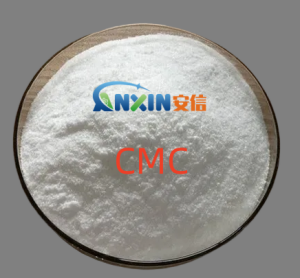Sodium Carboxymethyl Cellulose (CMC) is a chemically modified natural cellulose derivative, which is widely used in the food, pharmaceutical and daily chemical industries. Food-grade CMC, as a kind of polymer colloid, mainly plays the roles of thickening, stabilizing, water retention, emulsification and film formation in the food industry. Due to its excellent safety and outstanding functional properties, CMC has become one of the most mature polysaccharide materials used in food additives.
1.Safety analysis of food-grade CMC
Food-grade CMC is made from natural plant cellulose as raw material and generates carboxymethylated products through etherification reactions. Its structure is stable and is not easily absorbed and metabolized by the human body, thus having high physiological safety. Both the World Health Organization (WHO) and the Food and Agriculture Organization of the United Nations (FAO) have included CMC in the list of “safe food additives for use”, and the Codex Alimentarius Commission has also made clear regulations on its purity and application scope.
In terms of toxicological research, a large number of experimental results have shown that CMC has no acute toxicity, no mutagenicity, no teratogenicity, and no obvious physiological effects on animal or human organs have been found. CMC is basically not absorbed in the body and is mainly excreted in its original form, thus it does not cause metabolic burden or accumulate toxicity. The FDA of the United States has classified it As a GRAS (Generally Recognized As Safe, generally considered safe) substance, allowing it to be widely used in food.
Food-grade CMC has strict control over the residues of heavy metals, chlorides and organic solvents during production. Its purity is usually above 99% and it has undergone strict hygiene standard testing. As long as it is used within the prescribed scope and dosage by the state or internationally, the intake of CMC is completely safe.
2. Functional characteristics of food-grade CMC
2.1. Thickening and stabilizing effects
The CMC molecule contains a large number of carboxymethyl and hydroxyl groups, which can form strong hydrogen bonds with water molecules and exhibit significant hydrophilicity and swelling property. In food systems, even when added at low concentrations, it can significantly increase the viscosity of the system, form a uniform fluid structure, and thereby improve the taste and texture of the product. Meanwhile, CMC has excellent ionic stability and can maintain viscosity stability in acidic, alkaline or high-salt environments. It is often used in dairy products, fruit juice beverages and condiments to prevent stratification and precipitation.
2.2. Water retention and anti-precipitation properties
CMC can effectively combine with moisture, reducing the migration of moisture and freezing of food during storage or freezing. For instance, in frozen foods and baked goods, the water retention property of CMC can prevent cracking and hardening, extend the shelf life, and maintain the softness and freshness of the products.
2.3. Emulsification and suspension properties
CMC can form a viscoelastic film at the oil-water interface, enhancing the stability of the emulsification system and preventing oil from floating or stratifying. Therefore, it is often used in products such as ice cream, salad dressings, and milk beverages, working in synergy with emulsifiers to achieve a fine and stable texture.
2.4.. Film-forming and coating properties
CMC has excellent film-forming properties and can form a transparent film on the surface of food. It is used for coating fruits, candies or instant powders, playing a role in moisture-proofing, anti-oxidation and delaying deterioration. In instant beverage powder and flavoring powder, CMC can also prevent caking and improve solubility.
2.5. Improve taste and texture
CMC can endow food with a smooth and thick texture and improve the rheological properties of the product. For instance, in yogurt and jelly, CMC can increase density, endow a good texture structure and enhance consumers’ taste experience.
3. Application fields of food-grade CMC
Beverage category: Prevent sedimentation and stratification in fruit juice beverages and protein beverages, and improve fluidity and taste.
Dairy products: Used in ice cream and yogurt to enhance consistency and prevent ice crystal formation, improving the smoothness of milk quality.
Baked goods: Enhance the water retention and texture stability of dough in bread and cakes, and extend the softness period.
Condiments and soy sauce: Prevent oil and water from separating, enhance luster and adhesion to the wall.
Candies and instant foods: As a coating agent and anti-caking agent, it improves appearance and solubility.
Food-grade CMC is a safe, reliable and fully functional natural polysaccharide derivative. Its excellent thickening, stabilizing, water-retaining, emulsifying and film-forming properties make it hold an irreplaceable position in the modern food industry. From a safety perspective, CMC has been verified by multiple authoritative institutions worldwide and is recognized as a non-toxic, non-allergenic, and long-term usable food additive. As people’s concern for food quality and health continues to increase, the application fields of food-grade CMC will further expand, and its functional advantages in clean labels, low-fat foods and plant-based products will also continue to be demonstrated.
Post time: Nov-08-2025

